In October 2016 the London-based Clear Village project Small Works, in partnership with the Museum of Homelessness, curated a memorable photo exhibition called “Your SW1 Photostory.”
Inspired by the Slovenia photo competition “Photo-Story of our Neighbourhood“, our group worked with residents of Vauxhall Estate in Westminster, London. Residents were given disposable cameras and for two weeks set out to document their neighbourhood in SW1 according to the criteria of the Slovenia competition.
a.) most pleasant place in my neighbourhood
b.) professions in my neighbourhood
c.) my neighbour
d.) borders of my neighbourhood
e.) shared values in my neighbourhood
Once the film was developed we had a mountain of photographs! From here the Museum of Homelessness helped residents organise the photos and develop their narrative. What started as a fun activity to connect with residents and participate in a Human Cities project – quickly became an important conversation about how the neighbour has changed in just the last 10 years.
Our photo submissions didn’t win the photo competition but by the end of the workshops we had gained incredible insight into our neighbourhood and the people who call it home… as displayed in a few of our examples below.
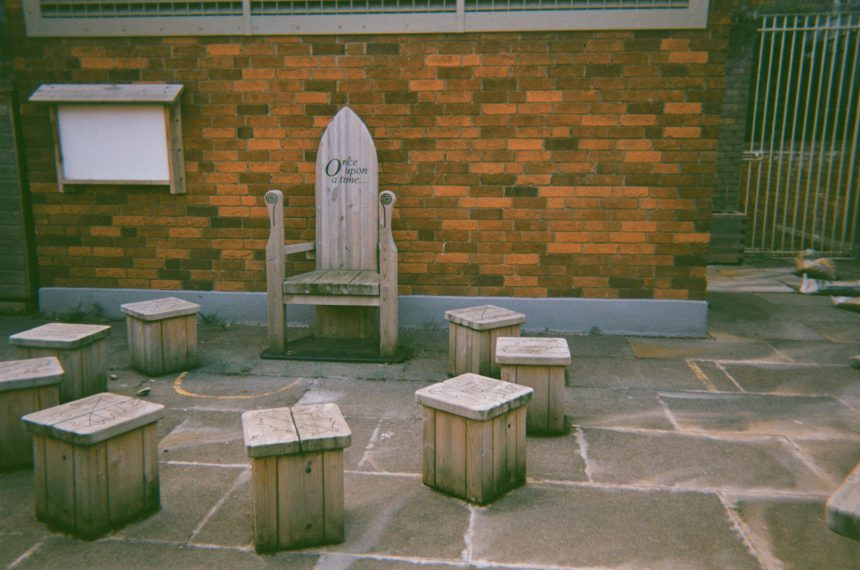
Generations of families used to live on the same estate. Now, it’s different. The children don’t play out so much anymore and the spaces for kids are underused. – Darlene (Vauxhall Estate resident)
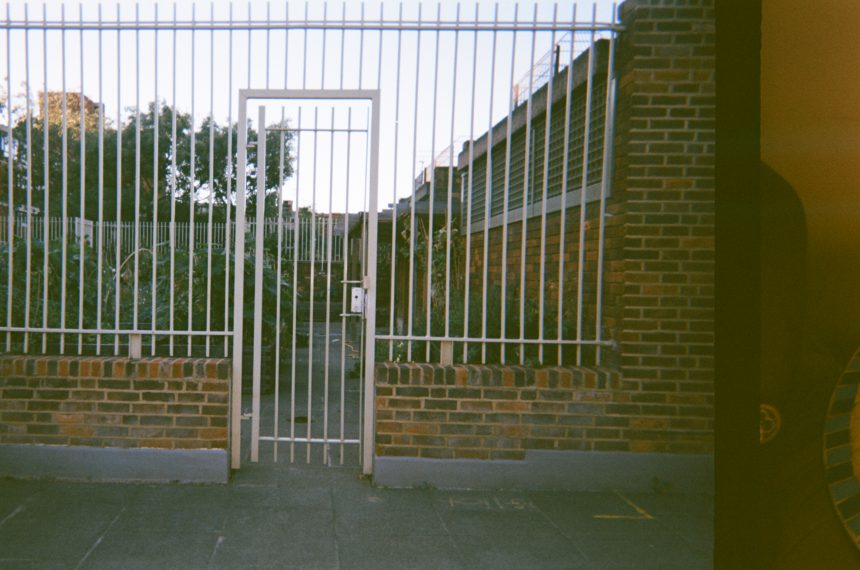
Lillington Gardens used to be really vibrant. The original designs included everything you needed, but the spaces which brought the community together – doctor’s surgery, library, laundry – have all but disappeared. – Darlene (Vauxhall Estate resident)
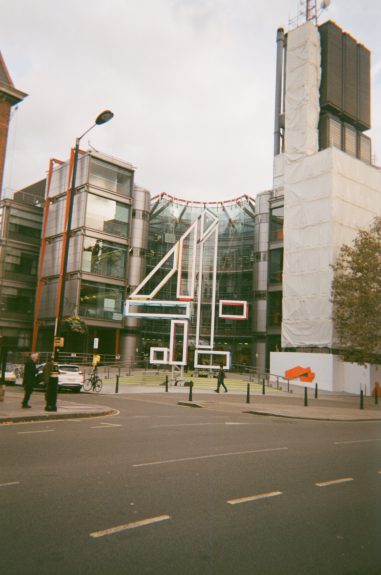
I would take my son to nursery past this building. At the time I was studying level 1 and level 2 in childcare, these were very good times. I used to listen to the news to improve my English. Channel 4 news at 7 is still my favourite. – Mariam (Vauxhall Estate resident)
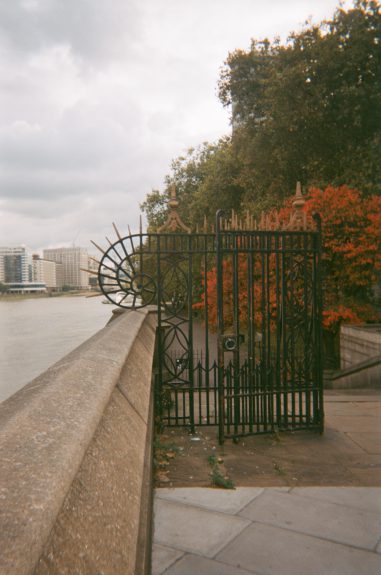
Millbank is a place of divide for me. My children would ant to go here after school, but I wanted to go home and feed them a nice homemade dinner! – Mariam (Vauxhall Estate resident)
Small Works is a project in partnership with Clear Village and CIVA; it’s a social enterprise hub that provides affordable desk space in central London in exchange for community support & services delivered directly by our dedicated members.
Museum of Homelessness is a Small Works member and the first of its kind in the UK. Museum of Homelessness engages the public through collecting, research, events and exhibitions. The museum is being developed by people from all walks of life, including those who have been homeless.
reported by Ljubljana Human Cities Team
The first co-creation briefing of Human Cities-Challenging the city scale took place on the 18th and 19th of June 2015 in Ljubljana. This was an occasion for the Human Cities Ljubljana team to meet the local community of Bratovševa ploščad, the neighborhood in northern Ljubjana where the experimentation process is taking place. Thanks to Alice Holmberg, an external expert working with Human Cities, discussions and activities were constructive, offering some concrete definitions of the issues and dreams of the local community for the future of their local public spaces.
DAY 1 of the co creation briefing – 18th of June 2015
The aim of the first day of a meeting was to gather locals living in the neighborhood to discover the neighborhood and its public spaces through their eyes. To do so, a tour around the neighborhood was organized with already engaged citizens. Damjana Zaviršek, creator of Skupaj na ploščad, an initiative aiming in offering new opportunities and ideas for the central paved area in Bratovševa ploščad (called “ploščad” by locals, which means a “platform” ), opened and moderated the walk. During the walk the local inhabitants as well as institutionalized stakeholders explained the issues related to concrete public spaces in the neighborhood and presented already existing facilities and assets. The issues of the renovation of the underground parking under the central paved area, the lack of events and regular uses of the central area, the already existing activities in the neighborhood (basketball fields, bar, park and urban allotment gardens) were pointed out in the discussions along the walk. This offered a great opportunity to start an asset mapping for the experimentation process.
After the tour, a communal picnic took place in the central open space of the neighborhood. An event on the spot was an opportunity to get in touch with even larger local public and to tackle the engagement processes going on in the neighborhood. Some participation tools were used on the spot to permit an active engagement of passers-by too: written feedbacks on notes on the artificial trees, a model of the space to understand the wishes/needs of the users of the space and interviews of the locals were performed. The event proved to be a success – many locals joined on a nice summer afternoon and shared their visions of the space.
“Thanks to the event, I have now a new perspective about the renovation process needed to make public space of Bratovševa ploščad a better place – it is clearer now what are the main obstacles for the renovation process to happen. We’ve met a lot of inhabitants and get the opportunity to talk with them about their visions of the future of open public space in the neighborhood”, Damjana Zaviršek, creator of Skupaj na ploščad, happily reported after the event.
Another remark was made by Matej Nikšič, researcher at UIRS, who observed that reinventing a suburban neighborhood and its public space with active participation was not an impossible mission. “The case of reinvented public space in Ljubljana city centre shows that public life can be truly thriving in this city. It was nice to see the same going on in a suburban Bratovševa ploščad for a while! The challenge stays however how to achieve this more often and on daily bases – Ljubljana’s suburban neighborhoods must not be merely sleeping units of the city”.
The gathering with locals led to some other interesting observations and conclusions. If you want to attract people to the community events, a good idea is to attract children as this will sooner or later bring their parents too. Children are the first ones to check the novelties in the public space, they are neither afraid nor skeptical to take part and try any new installation that was added to the urban public space. Nevertheless without a moderation they are less incline to participate in expressing their opinion. Talks and explanations are needed to attract them which makes a process more complex. Making them participate in the future of experimentation in Bratovševa ploščad will be a challenging task.
DAY 2 of the co creation briefing – 19th of June 2015
During the second day, the most active locals and the co-organising teams of UIRS and Skupaj na ploščad met in a focus group. An around the table meeting was set up to make a common vision of the experimentation process that shall contribute to the improved central paved space of the neighborhood. Alice Holmberg was leading the discussions this time with her knowledge and experience in moderation. Alice’s method was quite innovative for the inhabitants of the neighborhood. Thanks to a system of declaration of interests, she succeeded in making people talk about their wishes and dreams for the future of the place. For a moment burning issues were put away to focus on a positive-thinking process. Doing so, citizens thought about new ideas at the same time as pointing at what is missing in the neighborhood.
During the meeting the visions of inhabitants lead the Ljubljana Human Cities team to clearly identify several social issues and needs related to the local public space. The discussion revealed the need to re-focus the pre-existing debates (that have been going on in the local community for some time already) from technical repair and other technicalities to social life and local identity improvements.The need of inclusiveness in the future of the project as well as developing an intergenerational community and a human scale neighborhood were pointed out too.
Observations from the public picnic and declarations from the focus group meeting were matching: the platform needs a defined role and identity in the future to become an urban public space that people will use. Nowadays the platform is merely a transition space, in the future inhabitants truly wish the platform to become The Place.
To finish the co-creation session properly, Alice Holmberg and the Ljubljana Human Cities team gathered once more to explore the future options and start the elaboration of the experimentation agenda that will happen in the next two years. The two-day event helped Ljubljana team to understand and have a clearer picture of the issues in the neighborhood, the wishes of the local community and the expectations of some stakeholders.
Last but not least: we are taking this opportunity to thank our intern Lucile Fauviaux, who stayed with us in Ljubljana during the initial phases of Human Cities project and finished her active involvement with Bratovševa ploščad event. Her out of the box and at the same time well-structured thinking was a true contribution to the processes. We are glad that the internship turned out to be useful to Lucile too. “These two days where the occasion for me to observe the participation process in the neighborhood, to identify who is participating and who is not. Meeting locals and understanding how to make them talk about their wishes gave me an interesting insight into the work related to urban regeneration. It was a nice experience”, reported Lucile after the Bratovševa ploščad gatherings.
V troje – Threesome
This bottom up initiative started in a formal way. 30 young professionals were invited by the British Council Slovenia (an institution promoting cultural relations, English, arts and other UK values in the world and trying to create relationships with active and innovative professionals and citizens of other countries) to invest their spare time to think and elaborate new ideas in the field of sustainable development and climate policies. Three working groups were created. Without knowing each other before, the future initiators of V troje set up a working group to address the urban mobility problems. In some time the idea of promoting bicycling to work was developed, not only to address the CO2 footprint reduction but also because this would contribute to less cars on the streets (so more space for convivial public spaces) as well as better health of population. Addressing the mobility’s habits of citizens was seen as a potentially fruitful approach with multipliable effects.
At the end of the meetings initiated by the British Council the idea was already ready to be implemented. The name V troje was chosen in a provocative way to symbolize the group of 3 members that will need to act as a group and support each other in their daily endeavours to leave their cars at home and instead ride their bikes for everyday routines.
To stimulate people to participate, the idea of creating a competition with prices was chosen at the end. The event is organized each May as spring’s weather helps people to leave their car and activate their bikes. Troikas have to report if they biked to work every day and how many kilometers they did. If a team as a whole biked to work in a majority of the days of the whole action, they were eligible for the prize draw. The kilometers were used only to calculate the reduction of CO2.
Unfortunately, the British Council could not supported the financial costs of this idea when it was ready. The project was stopped for a while.
Later on, when the British Council’s project was already finished, Matej Niksic, one of the initiators, got in contact with the Danish embassy which expressed an interest in the action. Thanks to this collaboration the project was born again and run as a civil initiative of three members. The Danish ambassador to Slovenia agreed to provide bikes for the final prizes. The web developer Tomasz Pirc created a first website where people could print the calendar, fill it in and submit it at the end of the action. And Eldina Knez developed a PR strategy to promote the action. Some other partners were found in a meantime (local municipalities, media, other NGO groups working in the field of sustainable mobility) and the action was successfully implemented 5 times between2010 and 2014. But after the success of the project, some legal issues pushed the team to create an association (drustvo) named Urban Moves- Association for rising the quality of urban life.
5 years after the first edition of V troje and after the creation of a new, more functional website as well as lots of time invested into the initiative, some of the initiators could not dedicated that much time to the initiative anymore. It was agreed with Luka Mladenovic, a member of Urban Planning Institute of the Republic of Slovenia and coordinator of an European project Bike2Work, to make the initiative part of a wider European project and upgrade it. Based on this the name of the initiative was changed for Bring Happiness to Work, the main objective stays the same (changing the mobility habits or urban dwellers and thus contribute not only to improved air conditions in cities, but also more lively and humanized public space).
Key actors
Main promoters
The British Council of Slovenia set up the group of young professionals to develop different ideas of how to reduce the CO2 footprint. The group of 5 participants (a researcher, a web developer, a politician, a journalist and a public relations consultant) developed an idea that would contribute to less cars and more bikers on the streets.
Partners The British Council of Slovenia was the institution were the initiators met for the first time and developed the idea to some extent. When the British Council’s project saw an end the three of them stayed together and continued their volunteer work on the idea as an informal group of interested citizens. During the implementation of the project they managed to gain the support of different institutional partners such as Agency for Safe Transports, the Urban Planning Institute of the Republic of Slovenia (UIRS), the Ministry of transports, and The city of Ljubljana.
Every year one foreign embassy was partner too by providing the gifts for the competition. The first year the Danish Embassy provided 3 bikes as the bigger gift/prize for the winner of the competition, followed by the UK embassy, which participated 2 years as well as Austrian and Dutch embassies which participated one year. They all provided gifts related to cycling (bikes or cycling holydays).
Beneficiaries
People of the cities who could enjoy the benefits of riding a bike instead of driving the car in the city.
General urban population who benefited with less clutter of motorized traffic in the public space.
The municipalities across Slovenia which could take the advantage of V troje campaign to promote usage of sustainable means of transportation to improve living conditions in the cities (better air, higher quality of open urban spaces etc.).
“The planet” – thanks to the initiative which was encouraging people to stop taking their cars the CO2 footprint was lowered.
Role of design
Brand identity design: From the beginning, having a brand identity was important to develop the project. V troje which means threesome was provocative and attractive at the same time as being cute, simple and funny. A logo was design to help the project grow. T-shirts, posters, bike furniture and safety lights were developed or re-designed for the needs of the project.
Web design: Thanks to the funds of the the Do the Right Mix European award (7000 euros) the design of a better and easy to manage website where people could register on-line and full fill an online calendars was enabled. Before this new web page the evaluation process was very time consuming. Initiators had to open each printed calendar and full fill an Excel formula. Today everything is easier thanks to a interactive website tables that are automated.
The Urban planning Institute of the Republic of Slovenia (UIRS) is the central Slovenian research organisation in the field of spatial planning and related disciplines. Founded in 1955, UIRS was transformed into a public research institute in 1993, a status which continues to apply to date. Its basic activities are research, education and publishing. It also operates a public library with an extensive literature stock and large collection of other references in the field of spatial planning.
The UIRS performs basic and applicative research projects at the international, national, regional and local levels, addressing various issues and processes of the urban and spatial development of Slovenia and the wider area. Research activity also includes the advancement of methodological and practical solutions for the development of urban areas, and planning of settlements and the countryside.
Human Cities partners from Ljubljana, London and Saint Etienne will present the first common publication of Human Cities Challenging the City Scale 2014-2018 project to the Slovenian and wider regional publics. The book is a result of an extensive research of all partners and maps and analyses the already established participatory practices of urban public space provision. The presentation will take place in one of the architectural galleries in central part of Slovenian capital of Ljubljana, a cosy Dessa gallery. The invited speakers will present and discuss the Human Cities international mission (Josyane Franc, Cite du design, lead of the project), Human Cities activities in Ljubljana (Matej Niksic, Urban Planning Institute of the Republic of Slovenia, lead of Slovenian part of the project), and offer deeper insights into the contents of the book (Isabelle Daeron, France based editorial coordinator; Robin Houterman, UK based contributor ; Audrey Templier, France based designer). The event aims in bringing into the discussion local initiatives too to form a space of dialog on the issues and challenges of participatory practices in contemporary Europe. The event will also relaunch the exibition PUBLIC SPACES FOR LOCAL LIFE – SHARED VALUES. The exibition highlights some best practices of participatory reclamation of urban public space in Europe and stresses the need for cooperation among local actors to reach truly sociable local public spaces in European city.
Skupaj na ploščad! – Together to the Platform!
Bratovževa ploščad is one of numerous sleeping neighbourhoods of Ljubljana that lack its own local life and identity. Even if extensive paved and green open spaces are provided in the neighbourhood they are desolate and not used. Two locally based architects identified the potential of the extensive asphalt-paved area between the blocks of flats and initiated some activities that invited the locals to come out of their flats and spend time together in the common open space. At the initial stage they invited local inhabitants to jointly design and physically construct new street furniture that was completely absent. Once the place was equipped, the moderated activities were organised to animate the space and keep people coming and use the space on daily bases.
Key actors
There were two main promotors: architects Damjana Hudnik Zaviršek and Špela Nardoni Kovač. Their role was to initiate and coordinate the activities that were then running with the full participation of interested local inhabitants. For the successful implementation of the project it was important to get enough locals involved in the making of street furniture and preparation of the venues as well as getting involved enough volunteering moderators of the events. The final beneficiaries were the local inhabitants who were offered a much richer public space in-front of their homes and new activities added.
Role of design
Design in classical terms (designing physical objects) was not at the core of the endeavours. Nevertheless the participatory designing process of the new provisional (mainly wooden) street furniture played an important role in the initial phase as it helped drawing attention and get people involved.
Since 2014, the Human Cities network has been working on Challenging the City Scale to question the urban scale and investigate cocreation in cities. The Human Cities partners have carried out urban experimentations in 11 European cities empowering citizens to rethink the spaces in which they live, work and spend their leisure time.
Challenging the City Scale, journeys in People-Centred Design is the final book of the project. Through conversations with people involved, the book examines how bottom-up processes and their design, tools and instruments generate new ideas to reinvent the city. It offers inspiration and insights to everyone, from practitioners and politicians to designers and active citizens, eager to try out new ways to produce more human cities together.
Title : Challenging the City Scale, Journeys in People-Centred Design
Collective book co-edited by: Olivier Peyricot, Josyane Franc, Frank Van Hasselt
Authors: Josyane Franc, Olivier Peyricot, John Thackara, Alice Holmberg, Côme Bastin, Fleur Weinberg, Anya Sirota, Frank Van Hasselt, Robin Houterman
Graphic design: Audrey Templier, Isabelle Daëron Language: English Publisher and distributor: Birkhäuser, Basel
Co editors : Cité du design (Saint-Etienne) et Clear Village (Londres) ISBN: 978-3-0356-1796-2 Format : 21,5 x 26 cm (vertical)– 176 p Price: 39.95 € Available in partner’s bookshops and bookshop distributed by Birkhäuser Open access digital version: https://www.degruyter.com/view/product/510323?format=EBOK
The printed version was launched on 4th May 2018 in Graz, during the event organized by FH JOANNEUM included in the programme of the Festival Design Month.
You can now download it in digital , open access version following this link:
01_human_cities_challenging_the_city_scale_2014-2018_investigation
The book “Investigation” is a collaborative research work, made from all the case studies collected by the partners in Europe publicated on this website. They tell about actions led by creative citizens to transform their urban environment. Researchers from Cité du design Saint-Étienne, the Department of Design of Politecnico di Milano and Urban Planning Institute of The Republic of Slovenia Ljubljana provide a state of the art of these initiatives. Analysing these multiple examples, they investigate how urban dwellers participate, get organized and collaborate with creative professionals to prototype more liveable cities.
This scientific work published by Cité du design Saint-Étienne is addressed to researchers, practitioners, but also developers or creative citizens.
It is both an object of Design research and an incentive to develop experimental and collaborative projects of urban transformation.
Title: Human Cities / Challenging the City Scale 2014-2018 / Investigation
Main authors:
Cité du design Saint-Etienne: Isabelle Daëron, Floriane Piat & Eléa Teillier
Design Departement, University Politecnico di Milano: Davide Fassi & Laura Galluzzo
Urban Planning Institute of the Republic of Slovenia, Ljubljana: Matej Nikšič, Nina Goršič & Biba Tominc
Language: English
Copyright © Cité du design, 2018
ISBN: 978-2-912808-79-0 . Format : 215×260 mm – 240 p – not sold – free distribution within the framework of Creative Europe Programme of the European Union 2014-2018
As cities organizations are facing major urban and technological transformations, European citizens are taking possession of their cities, collaborating or acting for its renewal. Which kind of tools are set up to think and produce the public space together? How to make these bottom-up initiatives sustainable?
Challenging the City scale 2014-2018 / Investigation is a collaborative research work of Human Cities project, made from more than 80 case studies collected by the partners in Europe. They tell about actions led by creative citizens to transform their urban environment. Researchers from Cité du design Saint-Étienne, the Department of Design of Politecnico di Milano and Urban Planning Institute of The Republic of Slovenia Ljubljana provide a state of the art of these initiatives. Analysing these multiple examples, they investigate how urban dwellers participate, get organized and collaborate with creative professionals to prototype more liveable cities.
This scientific work published by Cité du design Saint-Étienne is addressed to researchers, practitioners, but also developers or creative citizens.
Title: Human Cities / Challenging the City Scale 2014-2018 / Investigation Main authors: Cité du design Saint-Etienne: Isabelle Daëron, Floriane Piat & Eléa Teillier Design Departement, University Politecnico di Milano: Davide Fassi & Laura Galluzzo Urban Planning Institute of the Republic of Slovenia, Ljubljana: Matej Nikšič, Nina Goršič & Biba Tominc
Language: English Copyright © Cité du design, 2018 ISBN: 978-2-912808-79-0 . Format : 215×260 mm – 240 p – not sold – free distribution within the framework of Creative Europe Programme of the European Union 2014-2018
Human Cities Exhibition / Ljubljana May 25th to September 25th 2017
PUBLIC SPACES FOR LOCAL LIFE / Shared values in diversified urban communities as a foundation for participatory provision of local public spaces
25 May 2017 at 15.00 Human Cities exhibition opening at Ruski car neighbourhood, Bratovševa ploščad 30, Ljubljana
The exibition is one out of eight so called »work in progress« exibitions that are being prepared within EU project Human Cities: Challenging the city scale (Creative Europe 2014-2020). In a period 2016-2018 eight variations of the exibition dedicated to participatory provision of local urban public space will be desplayed in eight European cities.The particularity of the exibition is that it grows along with the development of the project and is upgraded with new themes added by local organisers of each exibition. The exibitions are also related to bigger design events in participating cities.
The exibition was on show for the first time in 2016 in Milan (IT), followed by exibitions in Belgrade (RS) and Saint-Etiennu (FR) in early 2017. We are glad that there is the fourth consecutive exhibition on a display now – this time in Ljubljana. The opening coincides with a joint event of Human Cities project & AESOP’s thematic group Public spaces and urban cultures and the opening of Biennal of Biennial of Design BIO25 Faraway, So Close. The other exibitions will follow in Helsinki (FI), Bilbao (ES), Ciezsyn (PL), Graz (AT) and the final festive exibition will be set in Tallin (EST) in September 2018.
Ljubljana exibition is organised in four sections which reflect various activities of Human Cities project ongoing since 2014.
First and most extensive part of the exibition reviews good practices of local civil initiatives in European partner cities. The whole dataset is accessible online at http://humancities.eu/casestudies/, while Ljubljana exibition exposes some cases through the lenses of so called shared values of Human Cities that have been identified by the partners as important for enriching and assuring the quality of life in public space. These values are empathy, wellbeing, sustainability, intimacy, conviviality, mobility, accessibility, aesthetics, leisure, imagination, sensoriality, respect and solidarity, while the Ljubljana exibition is adding the fourteenth one – cooperation. Special attention is given to the values shared by local inhabitants and other users of local environments in their endeavours for better urban public spaces. This section of the exibition addresses the questions of participatory provision of local urban public space in increasingly economically, socially and ethnically divers urban communities.
Second part of the exibition presents 25 photostories that have ,according to an international jury, best answered to the challanges of an international call for contributions Photostory of my neighbourhood. The competition was ongoing in autumn 2016 and was based on an participatory web-based tool that allowed the inhabitants of any city to express their perceptions of their living environments. The main aim was to reveal the elements of the urban neighbourhoods that are common features in the mental maps of a greater group of people in the local communities, while at the same time reflect the shared values that connect local people. Identification of these values forms an important base for setting up common visions for the future development of local environments. Photostories are »written« by inhabitants themselves by contributing photographs an their subtitles within pre-defined categories. These categories can relate to different aspects of built environments and life in the neighbourhoods, such as perceptions of the borders of the neighbourhoods, neighbourly relations, professions in the neighbourhoods, identification of most pleasant local places or shared values that are common to local people. The web-tool Photostory of my neighbourhood allows an on-going production of further photostories (see http://humancities.uirs.si for more information).
The third part of the exibition is dedicated to the educational activities in the field of spatial culture. The exibition shows cutting-outs from seven thematic workshops titled Neighbourhood, public space and active role of inhabitants, which were ongoing in autumn 2016 jointly with pupils of second triad of the primary school OŠ Danile Kumar. Aleksej, Enis, Enja, Filip, Filip Bor, Gašper, Juna, Lucija, Tilen, Valentina and Voranc have been getting acquainted with the role of public open space in the neighbourhood with a support of UIRS, MAO and Skupaj na ploščad! as well as their teacher and school principal. The workshops were a joint reflection on the role of nature in the neighbourhood and the conception of public space to be attractive to various user-groups (children, elderly, cyclists etc.). Through the role-playing different professions involved in urban design were got known (urban planner, architect, landscape architect, traffic engineer, sociologist etc.). Jointly the bee&bird-house-hotel was made and installed in the open public space of the neighbourhood. In a creative atmosphere the roles of model making, field work and photo-analyses were learnt. We have jointly found out how important it is to discuss the spatial issues, freely express one’s opinions about problems and ideas for the future, and thus pointed out that it is important to impart spatial vigilance to young people from an early age.
The fourth part of the exibition titled A place to get together – design of Bratovševa ploščad – students’ ideas presents five conceptual solution of the invited student competition for the redesign of the central open space of Ruski car neighborhood. This has been organised within Human Cities project and with the support of Lafarge Cement, Urban Planning Institute of the Republic of Slovenia and civil initiative Skupaj na ploščad! in the seminar of prof. Fikfak at the Faculty of Architecture, University of Ljubljana. The jury recognized two conceptual solutions, which in the best way addressed the challange to concretely intervene into space to encourage more uses there. For the purposes of implementation of temporary intervention the students combined both selected competition ideas and suplemented them with some elements from other competition proposals. The exibition is organised in a participatory way and invites the local inhabitants to vote for the best solution according to their opinion.
Human Cities Event / Ljubljana 23–27 May 2017
PUBLIC SPACES FOR LOCAL LIFE / Shared values in diversified urban communities as a foundation for participatory provision of local public spaces
A joint event of EU Human Cities: Challenging the city scale project (Creative Europe 2014-2020) and AESOP’s thematic group Public spaces and Urban Cultures
Organised by Urban Planning Institute of the Republic of Slovenia, Ljubljana in cooperation with the Faculty of architecture of the University of Ljubljana and other partners.
The event is addressing the questions of participatory provision of urban local public spaces in economically, socially and ethnically increasingly diverse urban communities. The approaches to reveal shared values that are common to local inhabitants and other users of local environments will be in the focus as an important base for setting up common visions for local environments in participatory manner. The initial call of the event can be found here: http://www.aesop-planning.eu/blogs/posts/en_GB/urban-cultures-and-public-spaces/2017/02/10/readabout/call-for-abstracts-public-spaces-for-local-life-shared-values-in-diversified-urban-communities-as-a-foundation-for-participatory-provision-of-local-public-spaces.
In order to address challenges set-up in Human Cities project, Urban Planning Institute of the Republic of Slovenia (UIRS), the Slovenian partner of Human Cities, has been developing and testing various research and action oriented approaches to participatory and socio-cultural improvements of urban public space to better understand the needs and aspirations of local inhabitants. The activities have started in 2015 in collaboration with Human Cities project partners (http://humancities.eu/people/) and other local partners and supporters:
Thanks to the synergies between the project partners and local partners and supporters the program offers a wide range of activities:
Tuesday May 23rd 2017
Wednesday May 24th 2017
Thursday May 25th 2017
Friday May 26th 2017
Saturday May 27th 2017
The detailed programme will be published prior to the event at http://humancities.uirs.si.
The official language of the event is English, the activities are free of charge with few exceptions of the events run by Museum of design and architecture (MAO) within Biennial of Design BIO25.
Registrations are opened at http://humancities.uirs.si/en-gb/. Please use one appropriate registration category out of three (1 Human Cities / Partners, 2 Foreseen speakers / Authors with accepted abstracts, 3 Audience).
For any further inquiries please contact humancities@uirs.si.
Welcome to Ljubljana in May 2017 – let’s co-create humane cities spirit together!
Human Cities Challenging the City Scale/Ljubljana
PUBLIC SPACES FOR LOCAL LIFE /
Shared values in diversified urban communities as a foundation for participatory provision of local public spaces.
A joint event of EU Human Cities partnership and AESOP Thematic Group Public Spaces and Urban Cultures hosted by Urban Planning Institute of the Republic of Slovenia (UIRS) and University of Ljubljana, Faculty of architecture (UL-FA), Ljubljana, 24 May 2017.
Urban Planning Institute of the Republic of Slovenia (UIRS) and partners hosted a 5-day international event addressing participatory planning of local urban public space in socially, economically and ethnically increasingly diverse communities. The event was structured in three interrelated activities: a seminar, a workshop and a field-trip. Special emphasis was given to the means of revealing shared values that local inhabitants and other users of local environments have in common, and are an important base for collaborative improvements of local environments.
This joint event was the meeting point between two different European work groups: Human Cities and the Association of European Schools of Planning (AESOP).
On the one hand, the European partnership Human Cities (2008-2010, 2010-2012, 2014-2018) is addressing the issue of citizen participation in contemporary urban design. A particular focus is on bottom-up initiatives that self-organize in order to improve public spaces in their living environments. Important pillars of the project are research, experimental and educational activities related to public spaces. The main goal is two-fold: (1) to help citizens develop their affinity with common urban spaces and strengthen their approaches to participatory re-design of these spaces; (2) to advance the theoretical foundations in the field of participatory provision of urban public spaces. It also stresses the importance of citizen’s shared values in relation to their public urban spaces, such as empathy, wellbeing, intimacy, sustainability, conviviality, mobility, accessibility, imagination, leisure, aesthetics, sensoriality, solidarity and respect.
On the other hand, the AESOP Thematic Group Public Spaces and Urban Cultures values a critical and constructive dialogue on the processes relating to series UNSTABLE GEOGRAPHIES – DISLOCATED PUBLICS (2016-2018) that equally involves researchers and practitioners, locals and guests. The proposed umbrella topic aims to explore and rethink relations amongst different concepts and meanings related to (1) cities facing austerity, crisis, and a variety of migration patterns, and (2) to civic responses, such as emerging practices of self-organization, social innovation, and planners’ investments in building solidarity, hope, and trust. The topic has been approached in a dialectical manner and conceived as a dynamic framework that allows for the exploration of various (relational) aspects of public spaces and urban cultures, as well as socio-theoretical approaches to critically investigate and shape these spaces and cultures.
On the first day of the event, 23 May 2017, Stefania Ragozino (IRISS CNR) held a lecture titled Possible trajectories to navigate neo-liberal urbanism in UK. Hybrid organizations to implement activist planning. She presented a heritage-led regeneration process led by a social cultural enterprise which is a rather new approach in Slovenian context and encouraged lively debate among the discussants.
On the second day, 24 May 2017, a Human Cities & AESOP joined seminar PUBLIC SPACES FOR LOCAL LIFE was held in the Faculty of architecture (UL) of Ljubljana.The seminar was started by Matej Nikšič (UIRS) with a short introduction of the Ljubljana’s Human Cities Event, followed by the welcome speeches by a director of Urban Planning Institute of the Republic of Slovenia (UIRS) Igor Bizjak and a dean of the Faculty of Architecture of the University of Ljubljana Peter Gabrijelčič.
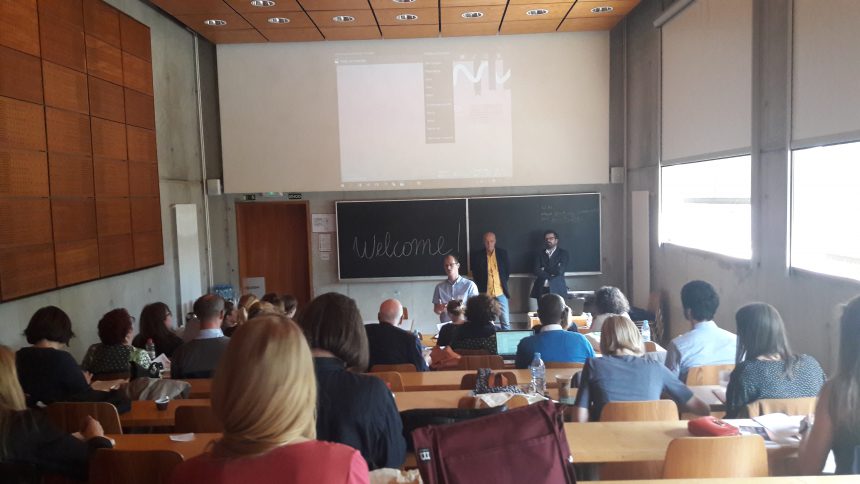
The past and ongoing activities of Human Cities partnership in Europe and specifically in St. Etienne (France) were introduced by the international lead of the project Josyane Franc (Cité du design), while Stefania Ragozino (IRISS CNR) presented aims and activities of AESOP’s thematic group Public Space and Urban Cultures
The keynote speech was given by Davide Fassi from the Politecnico di Milano. He presented actions in the public spaces that are based on co-design principles and enable people to make things happen in their living environments. He pointed out the role of universities in local communities as activators and developers of prototypes in cooperation with local residents, who take the role of not only beneficiaries but also activists that can sustain these activities in a long term.
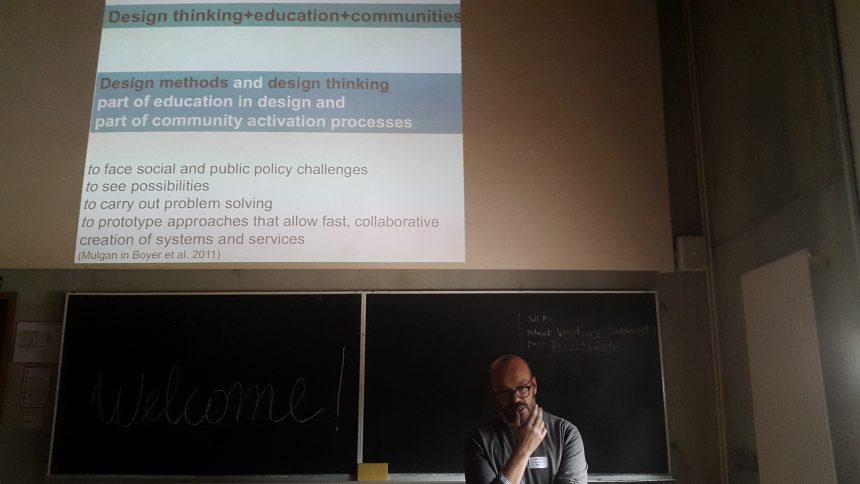
After the keynote two authors had the opportunity to argue on the topics they proposed to an open call for contributions. Boštjan Bugarič (Faculty of Architecture, Ljubljana) explained his work on communication tools for designing public space, while Tomaž Pipan (Biotechnical Faculty, UL) gave a lecture on spatial data and interaction technologies in public participation. The first session and the discussion was moderated by Stefania Ragozino (IRISS CNR).
In a second part of the seminar many authors presented their research or practical work in a form of pecha kucha. Vincent Chukwuemeka (Department of Architecture, Ghent) introduced his thesis related to collective spaces of informal and formal markets as drivers of self-organisation processes of urban growth on the case of Nigeria. Merve Demiroz (Polytechnic of Turin) presented potentials of self-organized communities in the urban regeneration on the case of Izmir, Turkey. The role of open space for the healthy childhood and active ageing was presented by Katarina Ana Lestan (Biotechnical Faculty, UL), while Marta Popaszkiewicz (Faculty of Architecture, Warsaw) talked about the commonly created public spaces on the case of Warsaw local centers. Vojko Vavpotič (Local renewal office of Planina neighbourhood, Kranj) explained how they are pioneering the establishment of a local regeneration office – first of its kind in Slovenia. Andrej Pogačnik addressed the topic of the reconstruction of unbuilt areas within housing communities and exposed the privatization issues. Similarly, Zala Velkavrh (KD prostoRož) tackled the issue of ownership in the renewal of public spaces in residential neighbourhoods, which is characteristic for the post socialist cities. Ewa Gołębiowska (Zamek Cieszyn) elaborated on the need of comprehensive approach to urban regeneration on the case of mobility issues in her city. Ilona Gurjanova (Estonian Association of Designers) concluded the session by arguing that in order to enjoy urban public open space fully one also needs to have a chance of escape into his intimate, relaxation space. Second session was moderated by Stefania Ragozino (IRISS CNR) and Weronika Mazurkiewicz (Gdansk University of Technology). After pecha kucha presentations all presenters and audience had interesting discussion about the issue presented during the session. This second part of the seminar was closed by Matej Nikšič (UIRS) who also introduced the final session.
The concluding session was opened by Luka Skansi (Faculty of Architecture, Reka and Ljubljana) who made an introduction of Ruski Car neighbourhood, in which the next day of the event a workshop was going to be held. He exposed the basic urban planning and design principles that guided the conception of the neighbourghood and put them in a broader context of what was then Yugoslav and international urban planning. The final presentation was given by Damjana Zaviršek Hudnik from civil initiative Skupaj na ploščad! Who presented the already existing participatory approaches at Bratovševa ploščad, the central open space of Ruski car neighbourhood.
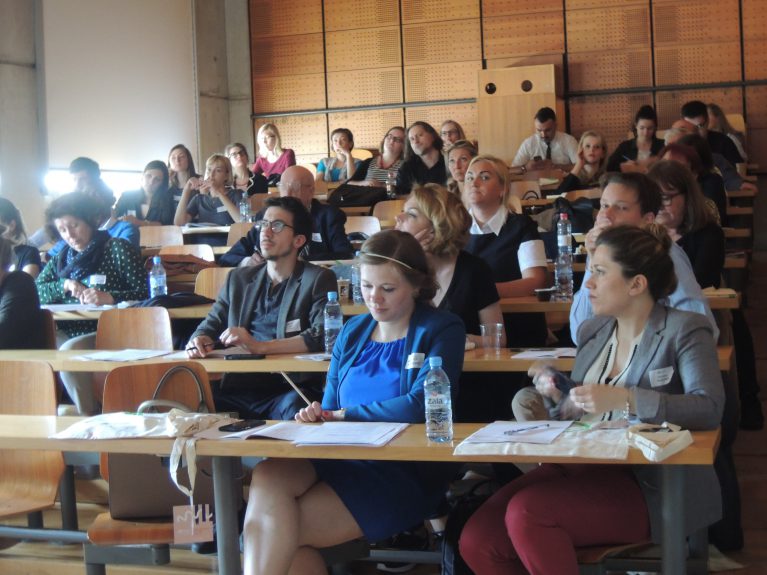
On the third day, 25 May 2017, a series of workshops took place in the northern outskirt of Ljubljana, in the Ruski car neighbourhood.
First workshop PHOTOSTORY OF OUR NEIGHBOURHOOD was led by Matej Nikšič and Biba Tominc (UIRS). The workshop was a re-dress of a 2016 action when the residents of housing estates in Slovenia and abroad were invited to analyze their living environments through photography and attached captions. The participants walked through the estate with their photocameras and took pictures of the neighbourhood with five analytical categories in mind. At the end they submitted the photos to the digital archives along with the captions to be later added to UIRS’s page to the Photostory of our neighbourhood.
Second workshop WE DRAW! A SKETCHWALK THROUGH THE NEIGHBORHOOD was organized by Tanja Simonič Korošak (Studio TSK). Participants learned how to use ‘shorthand’ sketchbook technique to draw objects, landscapes and people. On a walk through the neighborhood they stopped at three places, and by drawing the observed scenes and events, became part of these places. Thus experience became not only visual, but multi-sensoric. Followed by short demonstration of sketching, the participants tried to capture into their sketchbooks the action in open public space and people in the urban context. At the end the sketches were digitalized. / Photo: Blaž Jamšek, Human Cities Ljubljana, 2017
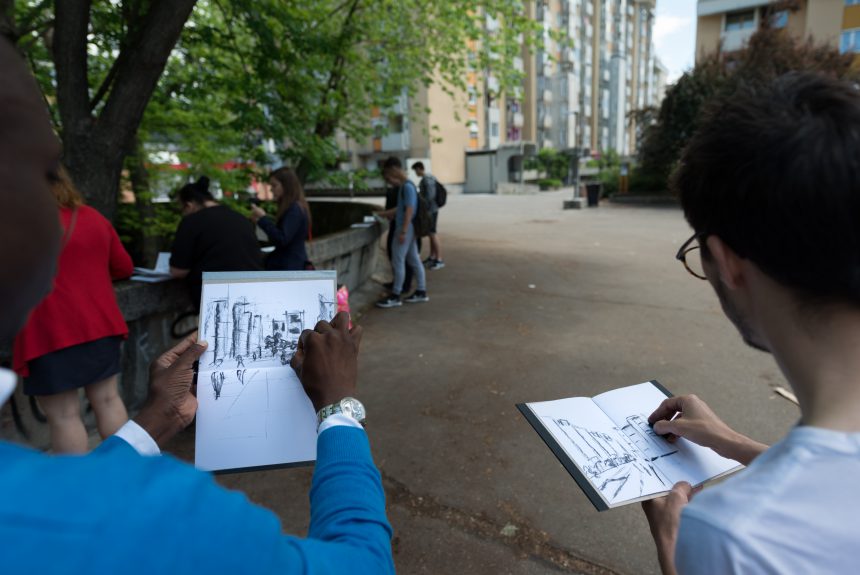
Third workshop CO-DESIGNING LOCAL PUBLIC SPACES WITH CHILDREN – LET’S MAKE NEIGHBOURS’ CORNER was organized by Nina Goršič (UIRS) Damjana Zaviršek Hudnik and Sandra Banfi Škrbec (Skupaj na ploščad!). In this workshop participants worked together to set up two nodes of encounter at Bratovševa ploščad. Thus they created a small point in space where they tried to incorporate a variety of activities that can connect the inhabitants of residential area while entertaining, gardening, reading, caring for plants and animals etc. They built the insects&birds house, added a bulletin board to one of them and knjigobežnica – a bookshelf – to the other. They completed the new arrangements by planting honey-plants. Local herbalists and pupils from local primary school also joined this workshop.
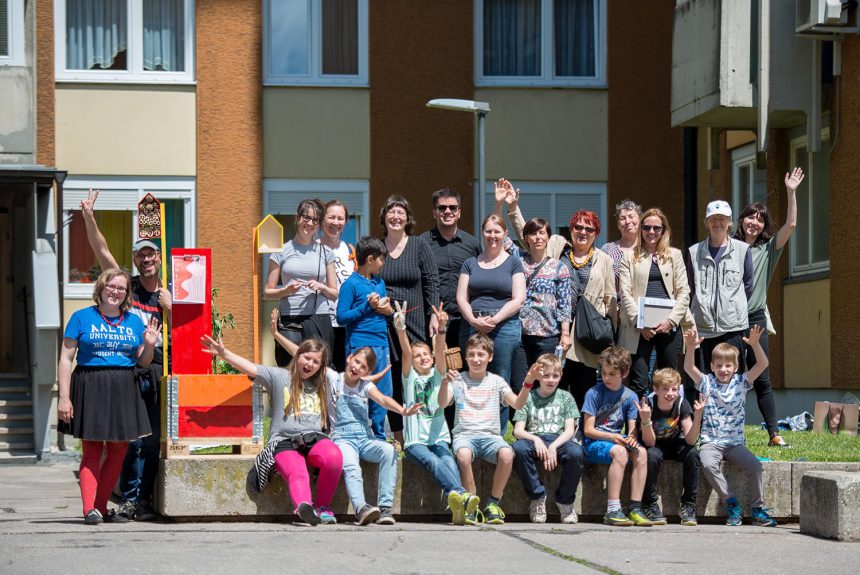
The fourth workshop SETTING UP AN OPEN-AIR MEETING ROOM was organized by Alenka Fikfak, Miha Konjar, Janez Grom and Urša Kalčič (Faculty of architecture, Ljubljana). Workshop followed the invited call for ideas to the students of the Faculty of Architecture in Ljubljana to thinking of a “gathering space” at Bratovševa platform under the patronage of Lafarge Ltd. The participants together with students set up a temporary wooden pavilion. The pavilion is inviting residents to pause in open public space and at the same time serves as an exhibition space for the students’ submitted projects proposals during summer months.
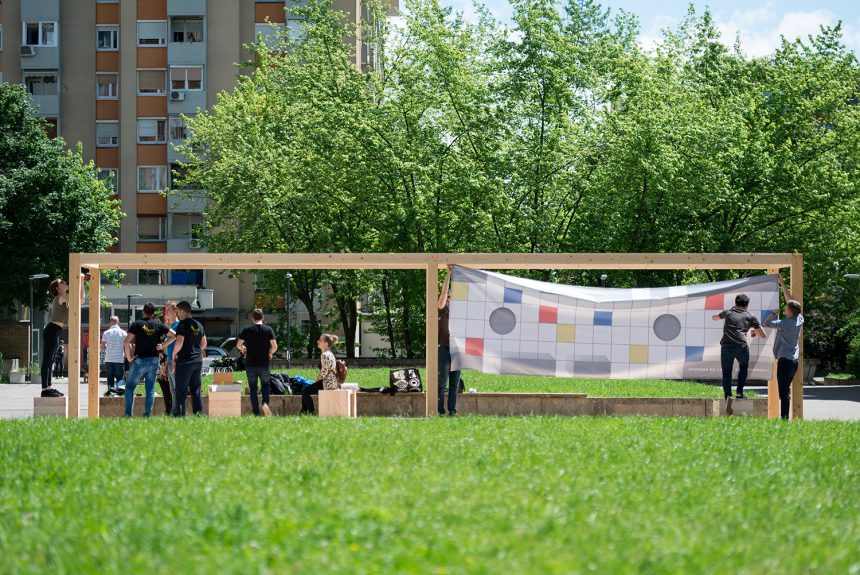
The day ended with official opening of the HUMAN CITIES EXHIBITION LJUBLJANA at four different locations in the neighborhood. The official opening talk was held by the president of the local council Amir Crnojević. First exhibition titled SHARED VALUES OF HUMAN CITIES addressed the importance of the shared values that local inhabitants share in order to set up common visions for the future of their living environments in general and public spaces in particular. The second section of the exhibition titled PUBLIC SPACE AND PARTICIPATION THROUGH THE EYES OF CHILDREN presented the process and results of seven workshops with local children rising various questions related to participatory urbanism and culture of built space. The third section titled PHOTOSTORY OF OUR NEIGHBOURHOOD presented winning photos that were submitted to the public call for analytical photo-stories of large housing estates. The last exhibition titled STUDENTS’ IDEAS FOR BRATOVŠEVA PLOŠČAD presented the ideas of future young urban planners for the redesign of Bratovševa pločad. Along the exhibition opening UIRS awarded the winners of the Photostory of our neighborhood competition and the call for student’s ideas.
The full catalogue of the HUMAN CITIES EXHIBITION LJUBLJANA can be viewed and downloaded here.
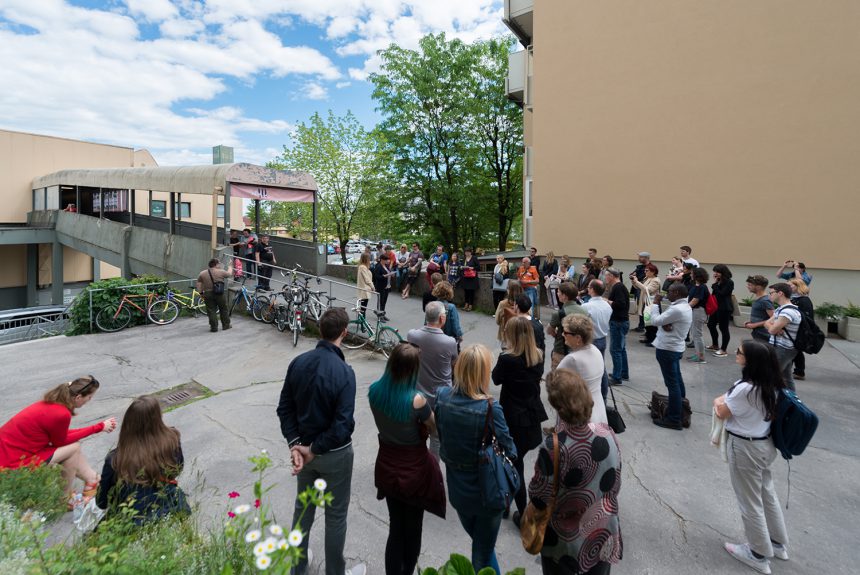
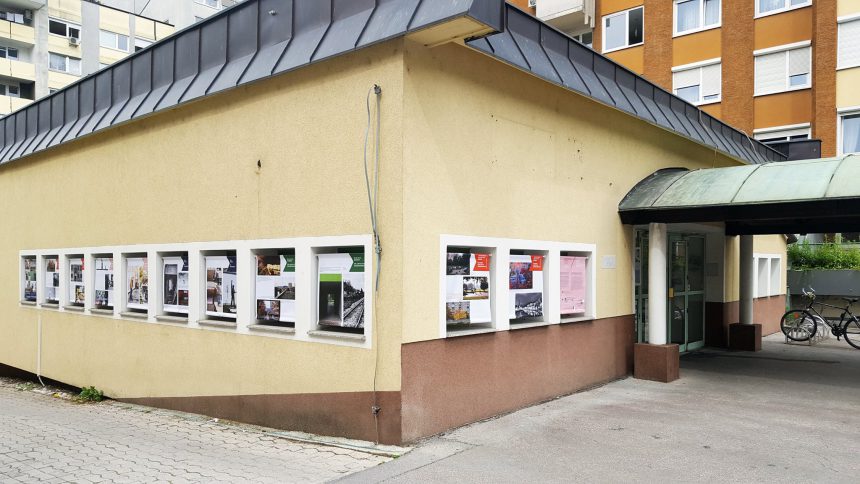
The evening program of the third day of the event was the opening of BIO 25 at the Museum of architecture and design (MAO) and the installation at Županova jama cave near Ljubljana.
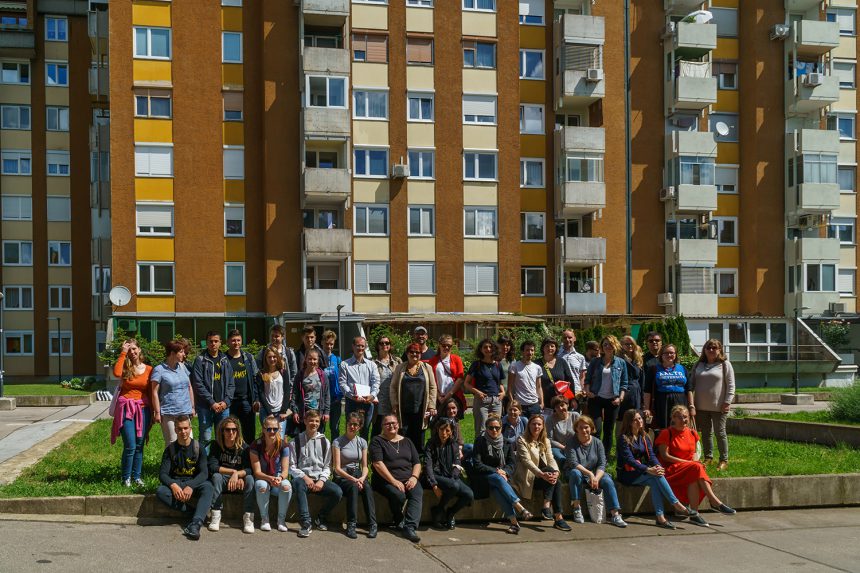
The morning of the fourth day, 26 May 2017, was reserved for a technical meeting of Human Cities. In the afternoon, a walking tour by an architect and urban planner Ivan Stanič (City of Ljubljana) revealed how the city of Ljubljana approached the urban regeneration of the central part of the city through public space improvements. The official programme ended by a nice boat trip along Ljubljanica river and later on at the Odprta kuhna/Open Kitchen, open-air restaurants place at Ljubljana Market.
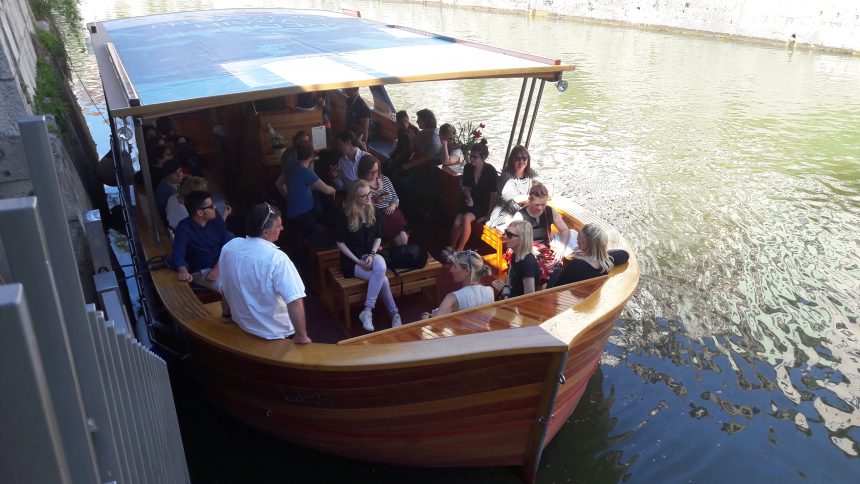
Scientific committees:
Organizing committees:
Related links:
Tzar’s honey
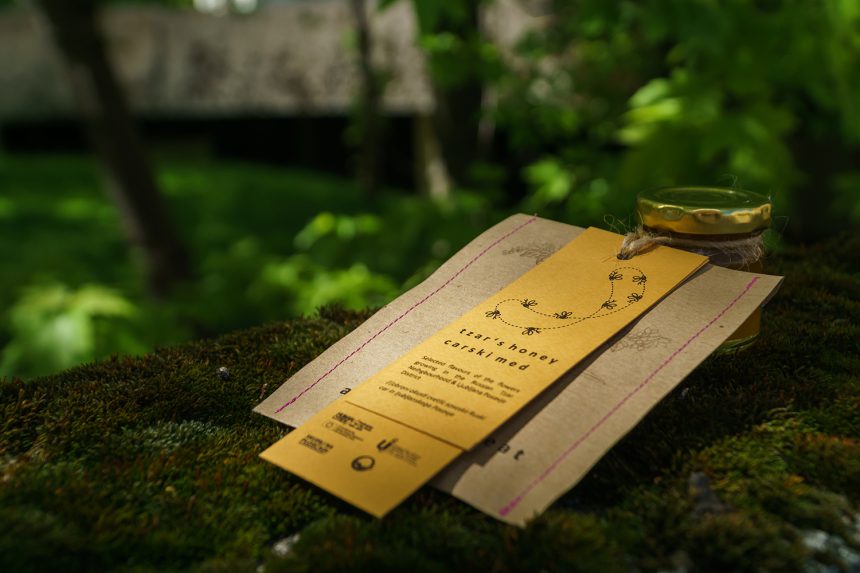
PUBLIC SPACES FOR LOCAL LIFE
Shared values in diversified urban communities as a foundation for participatory provision of local public spaces
Ljubljana, May 24th-26th 2017
Urban Planning Institute of the Republic of Slovenia (UIRS) is organizing a call for abstracts and joint event of EU Human Cities partnership and AESOP Thematic Group Public Spaces and Urban Cultures in May 2017 in Ljubljana.
A three-day Ljubljana event is structured in three interrelated activities: a seminar, a workshop and a field-trip. The main purpose is to address the questions of revealing the values and expressions of more and more diversified urban communities as an important step-stone to a more inclusive provision of local public spaces.
Important Date
Deadline for abstract submission is Monday 6 March 2017. Submit it to humancities@uirs.si.
ProstoRož – Space of Flowers
The association and the project of Prostoroz were created in 2004 by three young architects who studied together at the Architecture University of Ljubljana. The Ljubljana they were living in at that time was nothing to do compare to what the city is nowadays. The municipality action plan Ljubljana 2020 and the renovation of the city center started in 2006-2007. Tired, annoyed by their uninspiring and boring urban environments, but full of energy, the young ladies decided to create an association (zavod in Slovene).
Their first idea was to create an urban festival every year to talk about and to enlighten some specifics of urban issues in Ljubljana. The revitalization of the city center, which hadn’t started back then yet, was the first topic of the festival. The idea was to create small urban furniture and interventions in the public space to make people aware of the existence of an issue to be addressed. Basic furniture such as benches were added to the public spaces during the festival. Nevertheless, those installations were never taken into account by the municipality in order to build some more long terms ones. Therefore, the three urban activists decided to change the scale of their actions. They started to contact and inform the municipality about some urban issues in order to achieve long terms goals.
The association has developed many projects since their creation. Therefore we are going to enlighten only the most important ones:
This initiative provides to the locals a place to express themselves without dealing with the technical process of creating an event and to become more known by the wider community.
Following its new long term goals, Prostoroz created a contact between the neighborhood and the municipality in order to change the traffic system around the park to make it safer. After 4 years of talks, the municipality agreed to change the traffic system, improving considerably the quality of life around the park.
Today, they continue their activities in this area of Ljubljana by having the intention of renovating a playground close to the basket ball field. This time, the association has collaborated with kindergartens, primary schools and a center for disable people.
4) Knjižnica reči (Library of things): Adapting a concept which already existed in Berlin, Prostoroz created this new type of library where you do not borrow books but objects. The association, with the help of their partner Polygone, started this project in an unoccupied space of a former community building. The project was financed thanks to some funds from the municipality’s fund for social projects. In order to understand what people’s expectations were, the association created a survey. People identified the most important objects that they want to borrow. The objects were donated by inhabitants and in exchange gained a one year free use of the library. In this library, you can find playing equipments, hiking shoes, rollers, tents, tools for gardening or household appliances. For thirty euros per year, people can rent whatever they wish in this library!
Key actors
The project was created by three young architects who studied together at the University of Ljubljana. Maša Cvetko, Ana Grk and Alenka Korenjak, three active women in their thirties are still the leaders of the project. They also own an architecture firm. The architectural sector is in crisis in Slovenia momentarily. Therefore, architects are now involved more and more into bottom up initiatives and participatory actions.
They get support by other citizens in their endeavours: by Zala Velkavrh who is the program manager for Tabor Park, by Marko Marovt who gives a technical support, by Nika Van Berkel who is the program manager for Trubar’s Market and Dijana Vukojevic who is the manager for Park Tabor.
For every project, the core group cooperates with different associations or citizens. From one project to another, the partners changed and evolved. It can be local associations such as Bunker or IPOP for Tabor Park project, or some institution such as the municipality or public schools or some groups of citizens who want to participate. Everyone is welcome to participate at the activities and everyone can ask for the help of the association to solve an issue in Ljubljana.
Role of design
Design is not the major issue for the association, even though they try to pay attention to the colors, the shapes and the forms used for the construction of new urban furniture and communication tools. For instance when they created some benches thanks to recycle materials, they tried to reshape them and to paint them in nice colors related to the nearby environments.
Maša prepared all the communication designs. The association communicate through a website, a Facebook account, a twitter account, some paper prints of their activities, posters, some publications etc.
The printed version was launched on 4th May 2018 in Graz, during the event organized by FH JOANNEUM included in the programme of the Festival Design Month.
You can now download it in digital , open access version following this link :
01_human_cities_challenging_the_city_scale_2014-2018_investigation
The book “Investigation” is a collaborative research work, made from more than 80 case studies collected by the partners in Europe. They tell about actions led by creative citizens to transform their urban environment. Researchers from Cité du design Saint-Étienne, the Department of Design of Politecnico di Milano and Urban Planning Institute of The Republic of Slovenia Ljubljana provide a state of the art of these initiatives. Analysing these multiple examples, they investigate how urban dwellers participate, get organized and collaborate with creative professionals to prototype more liveable cities.
This scientific work published by Cité du design Saint-Étienne is addressed to researchers, practitioners, but also developers or creative citizens.
It is both an object of Design research and an incentive to develop experimental and collaborative projects of urban transformation.
A second book – addressed to a more general audience – will be released in September 2018 and presented in Tallinn during the Desainiöö festival.
Nina is an architect. She works as a researcher at the Urban Planning Institute of the Republic of Slovenia (UIRS) in Ljubljana. She participates in multidisciplinary applied research and projects at international and national levels. Her research fields are urban renewal, cultural heritage and accessibility for disabled. She has substantial working experiences in the fields of communication strategies, events and exhibitions organisation. Lately she is focused on dissemination of know-how and rising the Slovenian standards in designing public spaces and public buildings for all. In a team of UIRS and in cooperation with the Slovenian Association of Students with Disabilities she develops the methodology for evaluation of accessibility of build environments for people with any kind of disabilities. She finds Human Cities project an important platform to connect very diverse stakeholders that aim to create better urban living environments and provide better urban co-habitation conditions for a diverse group of users of urban environments.
Matej is an architect and urban designer, he works as a researcher at the Urban Planning Institute of the Republic of Slovenia in Ljubljana. A comprehensive city planning and a role of detailed urban design in contemporary city planning challenge him most in his professional endeavours. Being part of an interdisciplinary research team he takes part in projects related to open urban public spaces, urban regeneration, place identity by design, cyclable and walkable communities and other aspects of rising the quality of urban life. He is an active member of AESOP’s (Association of European Schools of Planning) thematic group Public Spaces and Urban Cultures which bridges the academic and practical approaches to contemporary public space provision. He is affiliated with the Faculty of Architecture at the University of Ljubljana where he teaches the second grade students of urban planning. As a “senior Human Citizen” he finds challenges in translating the rich legacy of Human Cities into durable lessons learnt that can encourage many citizens from all walks of life across the world to change their living environments for better. Matej is an urban activist himself too trying to encourage cycling in Slovenian cities within V troje initiative.
The book arrived freshly printed in Ljubljana on 20th April and it will be launched in Graz on 4th May 2018.
After a great work of case studies collection by all the Human Cities partners, a deep process of analysis by Cité du design, Politecnico di Milano and UIRS, and a nice graphic design elaboration by Audrey Templier, the scientific publication of Human Cities-Challenging the City Scale is released.
Its title: Human Cities / Challenging the City Scale 2014-2018 / Investigation
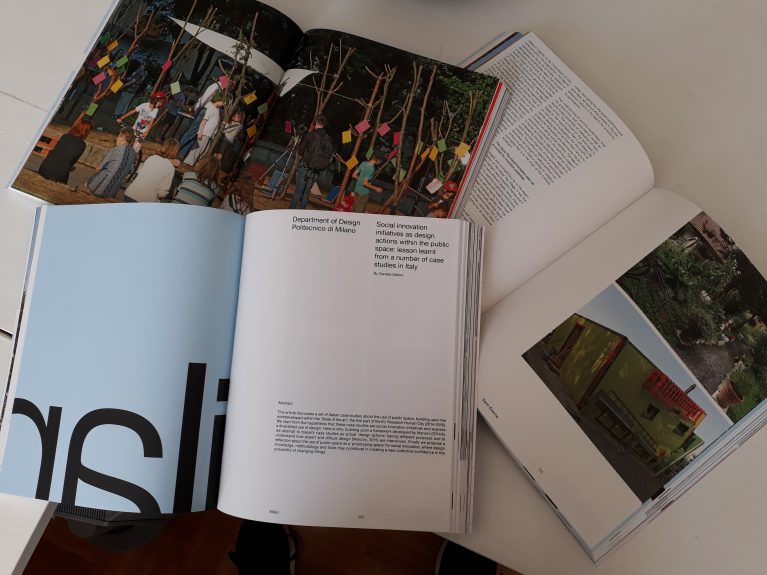
Glimpse of the book, fresh from the print shop in Ljubljana
As cities organizations are facing major urban and technological transformations, European citizens are taking possession of their cities, collaborating or acting for its renewal. Which kind of tools are set up to think and produce the public space together? How to make these bottom-up initiatives sustainable?
This Investigation is a collaborative research work, made from more than 80 case studies collected by the partners in Europe. They tell about actions led by creative citizens to transform their urban environment. Researchers from Cité du design Saint-Étienne, the Department of Design of Politecnico di Milano and Urban Planning Institute of The Republic of Slovenia Ljubljana provide a state of the art of these initiatives. Analysing these multiple examples, they investigate how urban dwellers participate, get organized and collaborate with creative professionals to prototype more liveable cities.
This scientific work published by Cité du design Saint-Étienne is addressed to researchers, practitioners, but also developers or creative citizens.
A large space is dedicated to images, to illustrate concretely this multiple initiatives, all linked by the sense of human scale and collaborative activities.
Our Investigation is both an object of Design research and an incentive to develop experimental and collaborative projects of urban transformation.

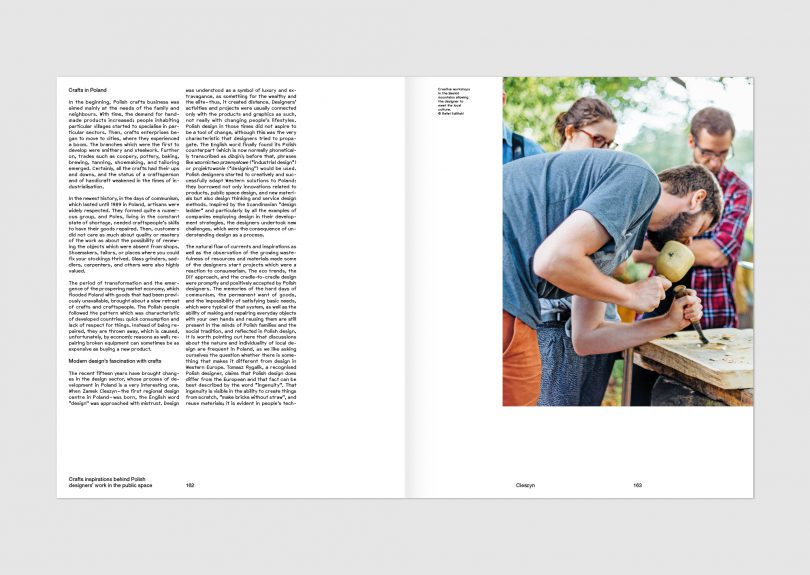
The book will be launched on 4th May in Graz for the 10 th festival Design Monat, during the event organized by FH JOANNEUM in presence of all the European partners of the programme. From this day, it will be available in digital version on the Human Cities project website – Case Studies section- and Cité du design Saint-Étienne website – publication section.
This is one of the common productions of the European project Human Cities_Challenging the City Scale . Together the partners will have produced 10 urban experiments in the various partner cities ; an exhibition-lab programmed in the main European Design festivals (next steps: Graz, Design Monat : 4thMay-24th June 2018 and Tallinn, Disainiöö: 10th– 16th September 2018) ; 11 international workshops ; masterclasses ; conferences ; and a final book narrating this experience (released in September 2018).
One of the most important outcomes of the previous Human Cities festival in 2012/ Reclaiming public space was the development of a Toolbox. The Toolbox is a collection of tools or toolkits, developed to let people take action in their cities or neighbourhoods. The Toolbox was conceived under the direction of Politecnico di Milano and Cité du Design and coordinated by Strategic Design Scenarios.
The design and concept for this app – which will be available to download from April 2016– was developed by three creative minds from Graz. Miriam Derler, Andrea Hutter and Miriam Weiss, all of them master students of Communication Design at the University of Applied Sciences, designed an interactive exhibition catalogue where users stand in the spotlight. The main idea was to create a catalogue, which you can not only browse but also be part of yourself. Therefore, all visitors of exhibitions have the possibility to upload their pictures, videos and remarks, which can then be seen in the app and on video screens in public space. In addition, a scan function allows participants to retrace authors of pictures as well as to leave comments. So everybody can be part of the app and the whole Human Cities Community. Due to this fact, a good mix of many different perspectives from various people can arise since everybody has a different design approach. With this app, the three designers successfully managed to connect the digital with the real world.
So participate yourself! Download the app in April and enjoy!
On 13th September 2018 , during the final event of Human Cities_Challenging the City Scale in Tallinn, happy partners launched a very important common production : the human cities 2014-2018 project book : Challenging the City Scale, journeys in People-Centred Design.
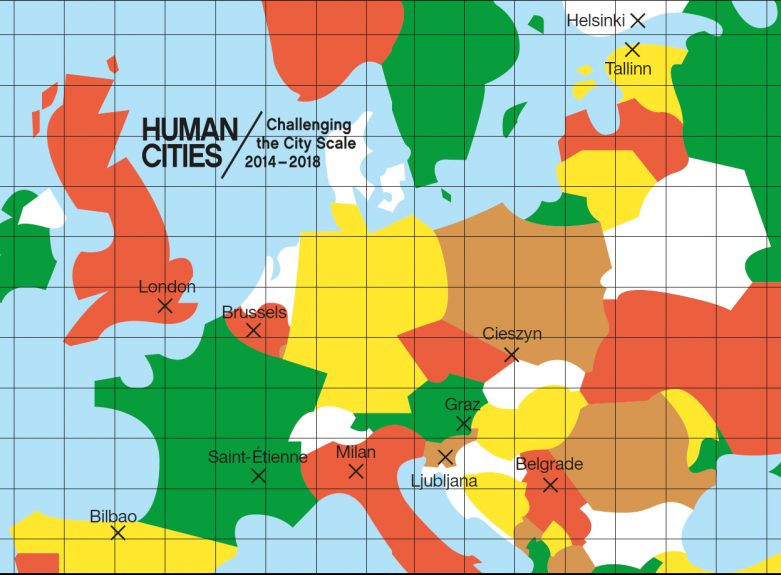
This 176 pages book is released by the famous international publisher Birkhäuser, and co-edited by Cité du design Saint-Etienne and Clear Village London, with the contributions of all the partners and invited authors. After a 1st publication oriented on research and inspirational case studies, this final book is the story of our experiences and cooperation addressed to a large audience of people interested in urban design and practices .
Since 2014, the Human Cities network has been working on Challenging the City Scale to question the urban scale and investigate cocreation in cities. The Human Cities partners have carried out urban experimentations in 11 European cities empowering citizens to rethink the spaces in which they live, work and spend their leisure time. Through conversations with people involved, the book examines how bottom-up processes and their design, tools and instruments generate new ideas to reinvent the city. It offers inspiration and insights to everyone, from practitioners and politicians to designers and active citizens, eager to try out new ways to produce more human cities together.
Our project can be seeen as a journey in people-centred design.
To prepare it, we asked Alice Holmberg, a designer and co-creation expert, to help each partner start their experiment through co-creative sessions. She explains in her article her approach to participatory design, and how she established a co-creation framework that was applied in a variety of contexts.

After the co-creative sessions, each partner departed on their own journey. For example, our partners in Saint-Étienne, Graz, Bilbao, Helsinki and London worked with citizens to turn vacant or
underused spaces into test sites for new solutions for work, service provision, education and communication. In Ljubljana, Belgrade, Cieszyn, Tallinn, Brussels and Milan, our partners joined forces with citizens to contribute to the development of a neighbourhood through improving the quality of public spaces. We invited two journalists, Côme Bastin and Fleur Weinberg, to capture the stories of the experiments in each of the 11 partner cities. These stories compose the main part of this book.

The variety of experiments allowed us to learn from each other. It also gave some hints for citizens, designers, and decision makers (insitutions and developers) which would like initiate that kind of actions. These learnings are shared in the third part of the book, written by Robin Houterman from a collective reflection led by all the partners.

We asked two urban experts to provide a context for our stories. John Thackara, a writer-philosopher, explains the importance of understanding the notion of the city “as a living system”. His chapter emphasises the need to take care of our commons, a term that includes the spaces, memories, knowledge, skills, culture and biodiversity that we all share.
Anya Sirota, founder of and architect at Akoaki, shares with us her experiences from Detroit, USA. In a context of severe urban decline, Akoaki designs architectural interventions, art objects,
and social environments that aim to make an impact far beyond their physical appearances.
As a conclusion – or an introduction to the next journeys to come – Olivier Peyricot and Josyane Franc re-question the topic of bottom-up initiatives in the global context of city making. Could active citizen be the sole driving forces of the tranformations in contemporary cities? How to collectively take responsibility and act for the global challenges facing our urban societies ?
Since its start, the Human Cities project has led to a network of “Human Citizens” distributing their knowledge and skills across Europe, and beyond as well by making use of the network of UNESCO Creative Cities of Design. By writing this book, we hope to expand this network of Human Citizens even further. We hope that by sharing our enthusiasm and experiences, the book will be an inspiration and a valuable reference for those inclined to become involved themselves. Moreover, we want to convince policy and decision makers of the value of these initiatives and inspire them to take action to facilitate them better in the future.
Damjana is an architect working in her architectural studio in Ljubljana. She is engaged in designing buildings and open public spaces, interior design and exhibition design.
Along with that, Damjana also actively promotes architecture as a discipline, sensitising members of the public about the importance of space. Faced with spatial issues, she responds by challenging both the contemporary lifestyle and our everyday habits, by bringing together various users of space and educating them, by launching initiatives for arranging neglected spaces and for temporary uses of urban space.
Since 2013, she has been among the supporters of the “Skupaj na ploščad!” initiative, encouraging the residents of the Ruski car residential area to consider the potentials of their public open space and to participate in the process of its restoration and revitalisation. During the last three years, the “Skupaj na ploščad!” (Together to the Platform!) initiative planned and implemented several spatial interventions in the local residential area, aiming to make the space between the blocks of flats more friendly and to encourage the local residents to use it, offering them a possibility of socialising in public spaces. She sees participation in the Human Cities projects as an excellent opportunity to make the ongoing activities in the residential district of Bratovseva ploščad even more effective by gaining experiences and practices of other cities.
What is experimentation process in the Human Cities project? Experimentation is a speculative method, which intrinsically includes a factor of uncertainty. It implies all kinds of activities (actions, projects, programs, etc.), which are targeting an objective. Experimentation is managed by respecting rigorous protocols concerning both the planning and the implementation of experimental situations, and the collection of data. The goal is to test hypothesis and confirm or reject them at the end of the experimentation process in order to improve knowledge.
Co-Creation Briefing sessions are the starting point of this process. They try to develop a problem-solving approach to an issue chosen by each city trough brainstorming and exchange of ideas and knowledge. Alice Holmberg, design strategist, lecturer and innovator is in charge of these sessions.
Ljubljana decided to focus on a peripheral urban open public space of “Bratovševa ploščad” in the “Ruski car” neighborhood in northern Ljubljana.
The exchange with the locals and professionals will be facilitated in a cooperation between the Urban Planning Institute of the Republic of Slovenia (UIRS) and a local initiative ‘Skupaj na ploščad‘ led by Damjana Zaviršek. They aim to create a more attractive and lively open public space on a currently empty and unused urban area.
The goal of this co-creation briefing session is to motivate a team of people to lead and take part in the experimentation process in the following years, to find new ways and to test new methodologies in the processes of co-design of urban public spaces. Nowadays, participation processes exists in Slovenia as part of the top-town urban planning procedures but are rather superficial and people tend to reject them. The idea is to find new approaches and make the participation processes more attractive and playful.
In order to create a momentum, Human Cities team in Ljubljana will gather some key local players from the neighborhood and will try to raise issues regarding the quality of life in the neighborhood. Next to this a picnic will be organized at the end of the day to attract potential new partners to help in leading the process of the experimentation. The picnic will be a working session at the same time – an urban planning game will be played to address the issues of public space improvements. This playful approach is a part of the experimentation that aims to attract people who are not usually involved in the discussions related to local matters.
Biba is a geographer working as a researcher at the Urban Planning Institute of the Republic of Slovenia. She participates in multidisciplinary projects mainly in the field of urban planning, urban renewal, accessibility for disabled and climate change. She specializes in graphic design, data visualization, database creation, analysis and management and explores how to demonstrate spatial data in clear, effective and user friendly way for different users and different media. As a creative mind she seeks solutions out of the beaten tracks. She sees Human Cities approach as an opportunity to link public space design with other creative practices and rethink the role of urban planning in the creation of contemporary public spaces. For Biba any kind of good public space is closely related to the social interactions that it encourages. She is an active Human Citizen too as an enthusiastic urban cycler.
Brussels, Thursday 4 February 2016.
Before we accelerate HUMAN CITIES 2015-2018, Challenging the City Scale, we let you (re)discover a snapshot of the past through the eyes of the oldest partners. The Human Cities project and network was initiated by Pro Materia in Brussels in 2006 and has now spread in different cities all over Europe. To find out more about the past I, Louisa Vermoere, interviewed three ‘historic’ partners: Researcher Laura Galluzzo and Prof. Davide Fassi at the Polimi Desis Lab of the Politecnico di Milano, Matej Nikšič of UIRS: Urban Planning institute of the republic of Slovenia in Ljubljana and Camille Vilain of Cité du design in Saint-Etienne.